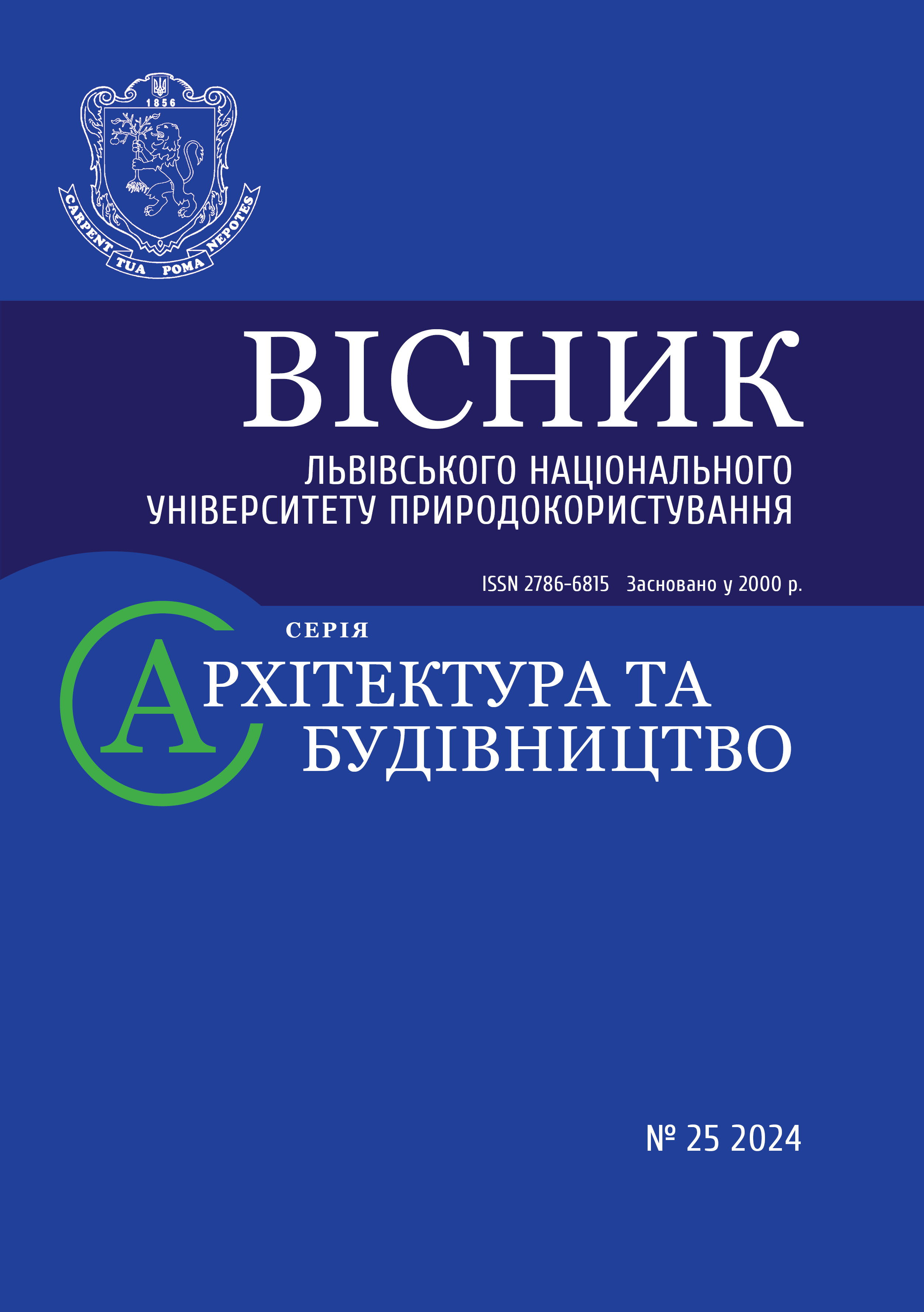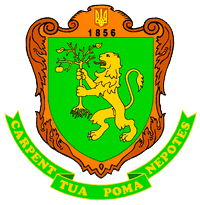HETEROCHRONY OF GAUDI'S ARCHITECTURE
DOI:
https://doi.org/10.31734/architecture2024.25.110Keywords:
Antonio Gaudi, Sagrada Familia, architecture, architectural styleAbstract
Today in the scientific literature there are active discussions about the architectural style of the Sagrada Familia Cathedral. Gaudi’s architecture is often referred to as organic or bionic. The presence of the bionic style in Gaudi’s architecture is supported by the fact that the Sagrada Familia has complex shapes, which are known today as helicoids, hyperboloids and hyperbolic paraboloids. Gaudi borrows these forms from nature and bases the construction of columns, vaults and other structural elements of the temple. However, the architectural image of the Sagrada Familia was also influenced by Gaudi’s existential experiences, which were the result of many factors. First of all, it is the emotional experiences of childhood. Other important factors in shaping the image of the Sagrada Familia were Catalan modernism, which emerged at the turn of the 19th – 20th centuries in Barcelona, the influence of German Expressionism, the interaction of contemporary Gaudi architects and the influence of Goethe’s philosophy on A. Gaudi. Goethe’s organic worldview, which was based on the understanding of the world as a living monadic whole, revolutionized not only philosophy but also architecture. The fundamental principle of the Sagrada Familia is a kind of proteism, the desire for constant renewal, expressed through both the interior and exterior of the building. The transformation of living integral formations, depicted on the three facades of the Sagrada Familia, demonstrates a series of metamorphoses of pra-phenomenon (Urphanomen – germ. after Goethe) and metamorphosis of the human soul under the influence of Christ’s teachings.
Antonio Gaudi’s architecture is special for its emotional content, which hides the author’s emotional conflicts and contradictions. Opposing one to the natural environment and emphasizing harmonious coexistence with it is an oxymoron that the author laid down in the architectural forms of the Sagrada Familia. The Church of the Holy Family can be seen as a symbiosis of advanced technology and creative expression, the skill of presenting the author’s architectural ideas and happy coincidences. The artist's original vision and understanding of the relationship between the anthropogenic and natural environment in the creation of architectural space, the place and role of man in this process determined his exclusively individual architectural style.
References
Antonio Gaudi. Site about the work and life of the Catalan architect Antoni Gaudi. URL: http://gaudi-barselona.ru/gallery/foto-Sagrada-familia/foto-Sagrada-familia_271.html (Accessed December 01, 2021).
Artigas I. Antonio Gaudi: complete collection of works, 1852−1900: in 2 volumes; translation from French by O. E. Ivanova; entry Art. F. Fontbona. Art-Rodnik. Moscow (Russia), 2008. T. 1. 600 p.
Bau. Forum of the Library of Spiritual Science. URL: http://predela.net/forums/index.php?topic=429.0. (Accessed August 27, 2024).
Bergos J. Gaudí. Personality and creativity. Barcelona (Spain): Biblion, 2003.
Bessegoda N. X Antonio Gaudi. Moscow (Russia): Stroyizdat, 1986. 208 p.
Casa Amatller by Josep Puig i Cadafalch (Left). Casa Batlló by Antoni Gaudí i Cornet (Right). Photo: Josep Panadero. URL: https://upload.wikimedia.org/wikipedia/commons/b/b2/Spain.Barcelona.Casa.Ametller.y.Batllo.jpg (Accessed August 27, 2024).
Donchuk T. V., Polyakov E. N. “Bionic” aspects in the works of Antoni Gaudi. Bulletin of the Tomsk State University of Architecture and Civil Engineering, 2018. Vol. 20, No 2. Pp. 9–30.
Gill D. Antonio Gaudi. Moscow (Russia): AST Astrel, 2008. 144 p.
Giralt-Miracle D. Gaudí is an architect, artist and thinker. In Bergos J. Gaudí. Personality and creativity. Barcelona (Spain): Biblion, 2003.
Glancey J. Gaudí’s La Sagrada Família: Genius or folly? Culture, 2014, URL: https://www.bbc.com/culture/article/20141014-gaudi-unfinished-business (Accessed August 27, 2024).
Goethe. Naturwissenschaftliche Schriften. Dornach, 1982, Bd. 5. S. 370.
Goetheanum: Great hall. Photo: Taxiarchos228. URL: https://ru.wikipedia.org/wiki/ %D0%A4%D0%B0%D0%B9%D0%BB:Dornach_-_Goetheanum_-_Grosser_Saal3.jpg (Accessed December 01, 2021).
Gopoxov P. A. On the question of the “epistemology” of I. V. Goethe. Vesnik OGU. 2003. Vol. 2. Pp. 9−14.
Gray F. Rudolf steiner: Occult crankor architectural mastermind? J. Archit. Theory Rev. 2010. Vol. 15. P. 43–60. URL: https://www.tandfonline.com/doi/abs/10.1080/13264821003629246 (Accessed December 07, 2021).
Guided tour of the Goetheanum The Goetheanum from the West. Forum of the Library of Spiritual Science. URL: http://predela.net/forums/index.php?topic=488.0 (Accessed December 01, 2021).
Hensbergenvan G. Gaudí is a bullfighter of art. Moscow (Russia): Eksmo-Press, 2002, 412 p.
House of Lieu and Morera. Photo: Kwong Yee Cheng. URL: https://uk.wikipedia.org/wiki/ Будинок_Льео-і-Морера (Accessed December 01, 2021).
Kalimova E. V. Principles of decorative and symbolic shaping in the work of Antoni Gaudí. Problems of genesis and evolution. Dis. ... candidate of art history: 17.00.04. State Russian Museum; St. Petersburg, 2011. 252 p.
Kazimirova A. Art Nouveau is not just a style! This is art! Re-home. URL: https://re-home.su/interer/ eto-ne-prosto-stil!-eto-czelaya-epoxa,-ar-nuvo.html.
Khvorostukhina S. Masterpieces by Antoni Gaudi. Moscow (Russia): Veche, 2003, 208 p.
Leksina O. I. Gaudí’s ruled surfaces in the design culture of Art Nouveau. Decorative arts and subject-spatial environment. MGHPA Bulletin. 2014. Vol. 4. P. 329–349.
Leksina O. I. Ruled surfaces as a structural, functional and artistic instrument of Gaudi’s architecture. Architecture and Modern Information Technologies. The Moscow State Art-Industrial Academy behalf SG Stroganoff, Moscow (Russia). 2014. Vol. 3 (28). URL: https://marhi.ru/AMIT/2014/3kvart14/PDF/AMIT_28_ leksina_PDF.pdf (Accessed December 04, 2021).
Lluís Domènech i Montaner − the architect of separatism. DOM. Interior. 2015. URL: https://dominterier.ru/bez-rubriki/luis-domenik-i-montaner-arhitektor-separatizma/ (Accessed December 01, 2021).
Marquez O. Sagrada Familia: The most famous temple in Barcelona. Barcelona: Travel Magazine. URL: https://barcelonatm.ru/sagrada-familiya/ (Accessed December 07, 2021).
Polyakov E. N., Donchuk T. V. Creative legacy of Lluís Domènech i Montaner. Architecture and urban planning. Tomsk State University of Architecture and Building. 2016. Vol. 3. Pp. 9−27.
Reus Travel Guide-33 Things To Do In And Near Reus / Catalonia-Valencia Església Prioral de Sant Pere de Reus – Priory Church Of St. Peter Reus. URL: http://www.catalonia-valencia.com/reus-travel-guide-33-things-to-do-reus.html (Accessed December 01, 2021).
Sagrada Familia − interesting facts. Olga Fedoriv’s historical blog. 2019. URL: https://historyurok.com.ua/ tsikavi-fakty/z-geografiyi/arhitektura/pro-sagrada-familiya.html (Accessed August 27, 2024).
Story of cities #13: Barcelona’s unloved planner invents science of “urbanisation”. The story of cities Cities. Barcelona’s Eixample district, with Antoni Gaudí’s Sagrada Familia in the foreground. Photograph: Amos Chapple/Rex. The Guardian. For 200 year. URL: https://www.theguardian.com/cities/2016/apr/01/story-cities-13-eixample-barcelona-ildefons-cerda- planner-urbanisation (Accessed December 01, 2021).
Stsesel S. A. The prerequisites of nonlinearity ideas development in modern architecture. Bulletin of the South Ural State University. Series: Construction and architecture. 2016. Vol. 3. P. 5–11.
Top 6 masterpieces of the great Antonio Gaudi. My planet. URL: http://myplanet.com.ua/?p=6309 (Accessed December 01, 2021).
Volichenko O. V. Concepts of nonlinear architecture. Architecton: Izvestiya Vuzov. 2013. Vol. 44. P. 21−30.
What is organic architecture and how did it develop? Lecture notes by Luigi Fumar / Recording by E. Seleznev, Space, 2019. URL: https://www.prostranstvo.media/chto-takoe-organicheskaja-arhitektura-i-kak-ona-razvivalas-konspekt -lekcii-luidzhi-fjumara/ (Accessed December 01, 2021).
Yastrebova O. G. Antonio Gaudí y Cornet. Philosophy of the Master of Catalan Art Nouveau and his architectural methods. Bulletin of landscape architecture. 2014. Vol. 4. P. 141–146.


